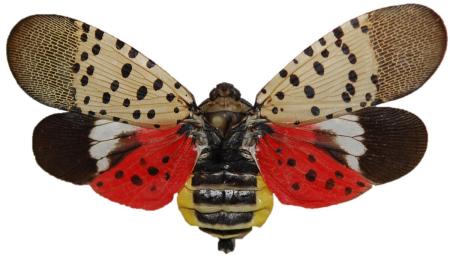About the Spotted Lanternfly
What is the Spotted Lanternfly?
The Spotted Lanternfly or SLF, Lycorma delicatula (White), is an invasive planthopper. It is a serious pest with a high reproductive capacity and large host range.
SLF does not fly long distances, but is known to hitchhike. Starting in the fall, SLF seek out outdoor surfaces and lay mud-like egg masses on tree bark, outdoor gear (like lawnmowers, bikes, grills), methods of transport, and more.
What does it do?
The spotted lanternfly uses its piercing-sucking mouthpart to feed on sap from over 70 different plant species. SLF has a strong preference for plants important to Colorado’s economy including grapevines, peach trees, hops, and other ornamental and fruit trees. SLF's feeding damage and stresses plants which can decrease their health and in some cases cause death.
What damage does it cause?
SLF can cause irreparable damage to grapevines and other crops, including peach trees, by feeding on the sap. The insect secretes a sticky residue called “honeydew” which also attracts wasps, and causes “sooty mold” to grow on surfaces, which can cover the plant, forest understories, patio furniture, cars, and anything else found below SLF feeding. The most damage to-date has been observed in vineyards, ornamental nurseries, and people's backyards.
